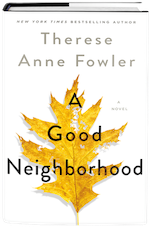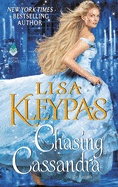 |
| photo: John Kessell |
Therese Anne Fowler is the New York Times bestselling author of Z and A Well-Behaved Woman. Z has been adapted for television by Amazon Studios, while A Well-Behaved Woman is in development with Sony Pictures Television. A Good Neighborhood, from St. Martin's Press, is a contemporary novel about a tragedy involving two neighboring families in a North Carolina town. The novel takes on divisive issues in American life such as race, class and conservative religion.
Readers of your previous novels, Z and A Well-Behaved Woman, might be a little surprised by the direction you take here. What prompted you to write a contemporary novel?
I'd planned to write another biographical historical novel, if I found a subject whose story engaged me passionately. But as I was researching various ideas for that potential next book, the seeds of A Good Neighborhood took root in my brain almost of their own accord, and grew like Jack's beanstalk. I thought, okay then, that's the book I have to write.
In many ways, this novel is a response story. The tradition of response stories is that other works provoke them, but in this case, I was provoked by my distress over the direction our country is moving. Storytelling has many purposes, one of which is to inspire--I mean, look at The Handmaid's Tale for one powerful example. Storytelling as activism. I can't think of a better use for my time right now.
Readers who know my work will recognize some TAF hallmarks, if you will, in A Good Neighborhood. Regardless of genre, my novels will always have a concern for social issues, interest in flawed but strong female characters and an examination of the troubling consequences that arise from what seemed to be good decisions.
Valerie has a deep connection to her local ecosystem, especially the nearby tree. Did that aspect of her character emerge from your own ecological concerns?
It did, and especially from my anxieties concerning the health of a huge oak in my own backyard after a new house was built next door. Having been a child of the '70s, when green activism became so prevalent, I feel as if environmentalism was built into me--so much so that I used cloth diapers with my firstborn (and no diaper service; I had no money for that) and tried to avoid plastic toys entirely.
I had, and still have, a deep affinity for nature, and I'm deeply troubled by the ongoing deliberate policymaking that disregards science in favor of corporate and individual profit. As Valerie (who's an environmentalist) says in the novel, "Trees are life. Not just my life, but life, period."
One surprising choice in the novel is your use of the neighborhood as a Greek chorus or narrator for the events. Why did you want to emphasize the neighborhood's perspective?
Every time I start a book, I spend a lot of time considering what the best narrative perspective is going to be for that particular story. With Z, it became obvious quickly that the story was Zelda's to tell. With A Well-Behaved Woman, I felt we needed to see not only Alva but the entire Vanderbilt world from a broader perspective than first-person would permit.
When I began A Good Neighborhood, it was clear to me that the story also needed a broader view--but that the view, and therefore the voice of the story, should also be particular, the way it is with a first-person account.
I thought, this is a story about us. These characters are people we know. We live with them, we work with them, they teach our children... and so it felt right that "we" should narrate. Using the collective point of view this way makes the story personal, and the personal is always more effective at conveying a message or lesson, as the narrators here tell us they hope to do.
I found almost every character easy to like, despite their flaws, with the exception of the wealthy patriarch of the Whitman family, Brad. Did you have a model in mind for his self-confident-bordering-on-delusional thinking?
Unfortunately, there are more than plenty of Brad-like men present in our news cycles these days, some of whom we've gotten to see in-depth. I've also known (and still know) a few such men personally.
A Forbes article from last summer [2018] reported on a study detailing how and why such men are often so successful in business, summarizing, "...research has found that narcissists are often socially successful, undeterred by rejection, charming, and highly motivated."
An earlier study's authors wrote, "[H]igh narcissists may be socially callous, but that is no reason for them not to be psychologically healthy. To use a far-fetched metaphor, the mind of a narcissist is like a sports utility vehicle. It is great to be in the driving seat, but fellow motorists must watch out, lest a collision with this mobile fortress demolish their more humble hatchbacks."
That's Brad, and that's our story.
The book tackles many hot-button issues, particularly racial prejudice and the dangers faced by young black or mixed-race men like Xavier. How did you make sure that you approached these issues with a level of sensitivity and understanding?
Yes, definitely a lot of interrelated big issues in this story--which wasn't by design, exactly; rather, I was just reflecting the complexities inherent in the lives and characters of people today. You really can't (and shouldn't, if you're trying to create truth) separate out race and class and gender and beliefs and occupation and culture and family. We are each the sum of all our parts.
Tackling racial prejudice, though, was the most delicate matter. So before I wrote the book, I read a lot of personal essays and articles detailing a wide variety of experiences with prejudice. I watched documentaries and interviews and news programs wherein the subjects recounted their stories, and wherein racial discrimination was examined in all its vast, ugly truth.
I read articles on the ways white authors, even well-meaning ones, too often make egregious mistakes when writing about non-white characters. Drawing from my own educational background in sociology and cultural anthropology helped, as did recalling observations I made while growing up in a diverse community and, later, the experience of being a minority during the three years I lived in the Philippines. And I asked questions of people I knew, including a friend of mine who in many ways resembles Valerie and who read the book in draft.
An author is always obliged to put themselves into the lives of the characters they're depicting. My own approach is something like method acting. Given the parameters of the character's traits and situation(s), how would that character think? What would they say and do? You can only do this well if you're sufficiently armed with information, humble about mistaken apprehensions and able to get out of your own way in order to give a truthful performance. I hope I was able to do so.
One thing that struck me about the book was the complicated power dynamics between and within the two families. Is there something you wanted to capture about how varying levels of privilege can distort relationships?
I think what I was aware of trying to do was simply to represent the complexities that comprise most relationships, and specifically the ones that would arise from putting these characters together.
Many years ago, John Gardner wrote about how if verisimilitude is the writer's object (and really, it had better be), authorial intention must be submissive to the authorial subconscious. A lot of what ends up on the page gets there through what feels like a mysterious organic process that's independent from deliberate authorial direction. For example, the scene in which Julia comes to the neighborhood book club meeting at Valerie's house: until I was writing the sentence about the food she brought, I didn't know she'd bring foie gras, but the choice then triggered other telling details about class and power for Julia versus the others present. The dynamic between Brad and Xavier at the book's opening is another example of just putting the characters in a scene together and then watching it play out as I typed.
But thinking about it concretely now, I wanted to capture what happens when the kind of corrupt thinking that can come from privilege perverts power, and therefore distorts relationships.
What do you think it means to be a good neighbor in an era when Americans seem so divided by class, politics and race?
I think the criteria are the same as they've always been: follow the Golden Rule. I don't mean to sound pat, but it's that simple. And also that hard. --Hank Stephenson
 Women's Work: Stories from Pioneering Women Shaping Our Workforce (Simon & Schuster, $35) by Chris Crisman helps illustrate the breadth of work women do in the United States. While the 58 women who tell their stories in this collection have faced plenty of hardship and opposition while achieving their career distinctions, it's their various routes to satisfying work--from beekeeper to taxidermist to paralegal-turned-coffee roaster--that serve up healthy doses of inspiration, enhanced by Crisman's vivid photos.
Women's Work: Stories from Pioneering Women Shaping Our Workforce (Simon & Schuster, $35) by Chris Crisman helps illustrate the breadth of work women do in the United States. While the 58 women who tell their stories in this collection have faced plenty of hardship and opposition while achieving their career distinctions, it's their various routes to satisfying work--from beekeeper to taxidermist to paralegal-turned-coffee roaster--that serve up healthy doses of inspiration, enhanced by Crisman's vivid photos. Recollections of My Nonexistence by Rebecca Solnit (reviewed below, Viking, $26) is a thorough investigation of a woman's struggle to achieve career contentment. In this genre-defying book, Solnit browses her personal experience of harassment, intimidation and humiliation to illustrate the journey that made her a celebrated essayist and activist. In a book that is less memoir than a probing critique of social systems, Solnit's own becoming calls out cultural silencing and suppression that prevent women and other marginalized people from achieving their potential.
Recollections of My Nonexistence by Rebecca Solnit (reviewed below, Viking, $26) is a thorough investigation of a woman's struggle to achieve career contentment. In this genre-defying book, Solnit browses her personal experience of harassment, intimidation and humiliation to illustrate the journey that made her a celebrated essayist and activist. In a book that is less memoir than a probing critique of social systems, Solnit's own becoming calls out cultural silencing and suppression that prevent women and other marginalized people from achieving their potential. A similar struggle against social constructs in hopes of achieving a fulfilling work life plays out in Hilary Leichter's absurdly comic debut novel, Temporary (Coffee House Press, $16.95). Our heroine is locked in a struggle with the isolating anonymity of late-stage capitalism as she temps her way through bizarre placements as house ghost, pirate and assassin's assistant. While shuttling through each impersonal and unstable gig, our temp seeks belonging and value and, most importantly, learns that she deserves both. --Kristianne Huntsberger, partnership program manager, Shelf Awareness
A similar struggle against social constructs in hopes of achieving a fulfilling work life plays out in Hilary Leichter's absurdly comic debut novel, Temporary (Coffee House Press, $16.95). Our heroine is locked in a struggle with the isolating anonymity of late-stage capitalism as she temps her way through bizarre placements as house ghost, pirate and assassin's assistant. While shuttling through each impersonal and unstable gig, our temp seeks belonging and value and, most importantly, learns that she deserves both. --Kristianne Huntsberger, partnership program manager, Shelf Awareness

















